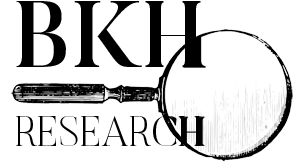When You Are Writing a Family History or Genealogy, What do you put in and what do you leave out?
Family histories and genealogies are filled with names, dates, and places, especially for births, deaths, marriages, and divorces. They also include lots and lots of relatives, in-laws, cousins, godparents, ministers, doctors, neighbors, people who hold the story together. In a genealogy, the author is going to have much more information about her branch and the branches closest to her than other, farther removed, more distantly connected relatives. It’s natural. How do you keep the whole from becoming lopsided?
My mom had more than twenty first cousins on her paternal side. I know those Breitenstein cousins and their families way better and with much more detail than I do her second cousins, the Fischer, Bodeman, Meier, and some other Breitenstein cousins. Her oldest cousin, Elizabeth married a wonderful man named Jimmy Baker, had four children, and moved to Massachusetts and then New Hampshire. I visited them with my best friend in the early 1970s and again with my husband in the early 1980s. In the meantime, we wrote back and forth. I never stayed with Mom’s other cousins in Louisville, because when I went to Louisville I stayed with my grandparents. So Elizabeth and Jimmy were different. I got to know them without the swirl of all the other relatives. In fact, I got to know them separately from their own children, who were gone, out of the house, married and living their own lives, when I visited. In the perfect world, I could have written about how funny they were, how self deprecating, how gracious, and how interesting. That might have hurt some feelings across the board, not that I said nice things about Elizabeth and Jimmy, but that I couldn’t, except through hearsay, say the same nice things about all the others. My grandmother taught Elizabeth and her younger sister Thelma how to drive, and when it came time to chose godparents for their youngest child, Grandma and Grandpa chose Thelma as one. Thelma’s two children were in my parents’ wedding and yes, they were very cute. So I am partial to my great uncle Mike’s daughters, and Uncle Ed’s daughter, and Uncle Carl’s son, and Uncle Herm’s two, and Uncle John’s daughter Carol, and Uncle Lawrence’s son Doug, and Uncle Jule’s kids, cause he was the baby, and all the others even though I didn’t know them, because Grandpa thought the world of his nieces and nephews. Listing them, I feel badly I left a couple out, but there are some I never met.
Back to the original question, what to put in and what to leave out? I include the spouses of cousins, but not a ton of detail about their lives. Only in the footnotes of my Breitenstein book, would you find my mom’s cousin-in-law Jimmy Baker, professionally known as James Gilbert Baker, was a well known physicist, astronomer and designer of optical lenses. Check him out on Wikipedia. I am proud of him, even though we don’t share any DNA, and I was glad to have known him. He was a good man.
Some thoughts on writing about family:
- Be evenhanded.
- Don’t hurt anyone’s feelings, if you can avoid it.
To be blunt, if a great great uncle had two families, all those children should be included because they are genealogically connected. If he chased anyone in skirts, but didn’t have children, it really isn’t necessary to include that information.








